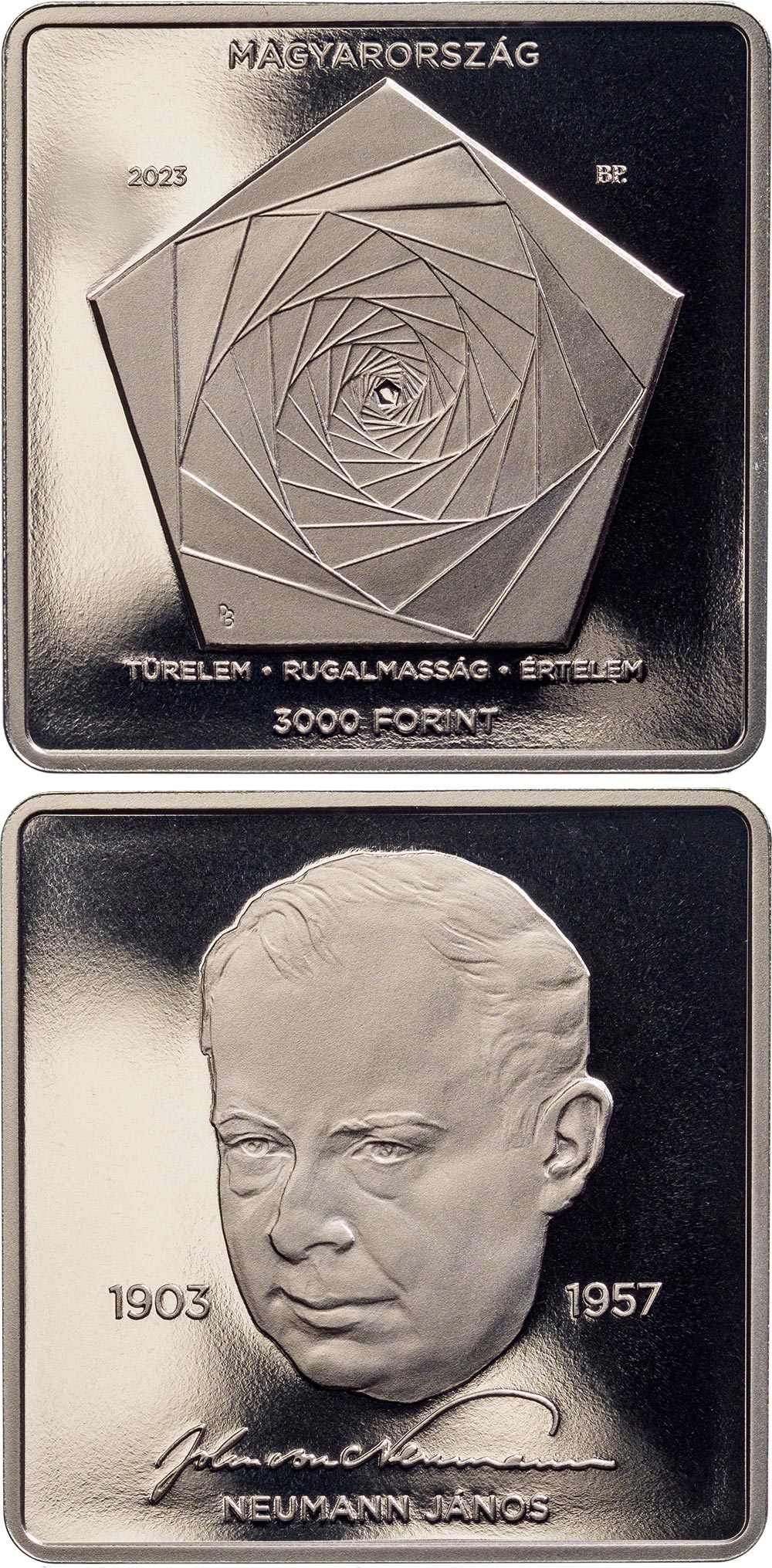3,000 forint - 120th Birth Anniversary of John Von Neumann

To commemorate the 120th anniversary of John von Neumann’s (Neumann János in Hungarian) birth, the Magyar Nemzeti Bank (MNB) is issuing a non-ferrous metal collector coin with a face value of 3,000 forints, in honour of the world-famous Hungarian mathematician. The special, rectangular collector coin is the 13th piece of the popular non-ferrous metal collector coin-series presenting Hungarian scientists, inventors and their inventions. The coin was designed by sculptor Balázs Pelcz.
John von Neumann, one of the world's most renowned Hungarian mathematicians, was born in Budapest on 28 December 1903. During his scientific work of nearly three decades, he brought his discoveries to many scientific areas, making ground-breaking discoveries in set theory, game theory and quantum mechanics, while laying the foundations of computer science as we know it today.
His early talent was further improved by his teachers at one of the most prestigious educational institutions of the time, the ‘Fasori’ Lutheran Secondary School. Famous for his quick thinking and his extraordinary ability to reckon in his head, János Neumann enrolled at the University of Budapest to study mathematics in 1921. During his university years, he had the chance to study abroad with some of the great scientists of the time, which laid the foundations for his subsequent successful career. He earned his doctoral degree in mathematics in 1926. A year later he taught as a private tutor at the University of Berlin, and from the 1930s, at an exceptionally young age, he became a visiting professor at Princeton University in the US, and later a professor. His involvement in military engineering research during the Second World War brought him numerous scientific awards and high-profile government contracts. In the 1940s, he laid down the principles of the computer and was instrumental in building the EDVAC, the first electronic, digital, universal computer with internal programme control. By the early 1950s, he had built the IAS computer, based on the architecture he had conceived, which was already considered a modern computer and went down in computer history as the forerunner of many computers constructed later. In the construction of digital computers, the implementation of the Neumann principles (fully electronic computer, the binary system, use of the arithmetic unit and the central control unit, internal programme and data storage) brought about a revolution in science and everyday life. A combination of hard work and cancer weakened his body and he died in 1957.